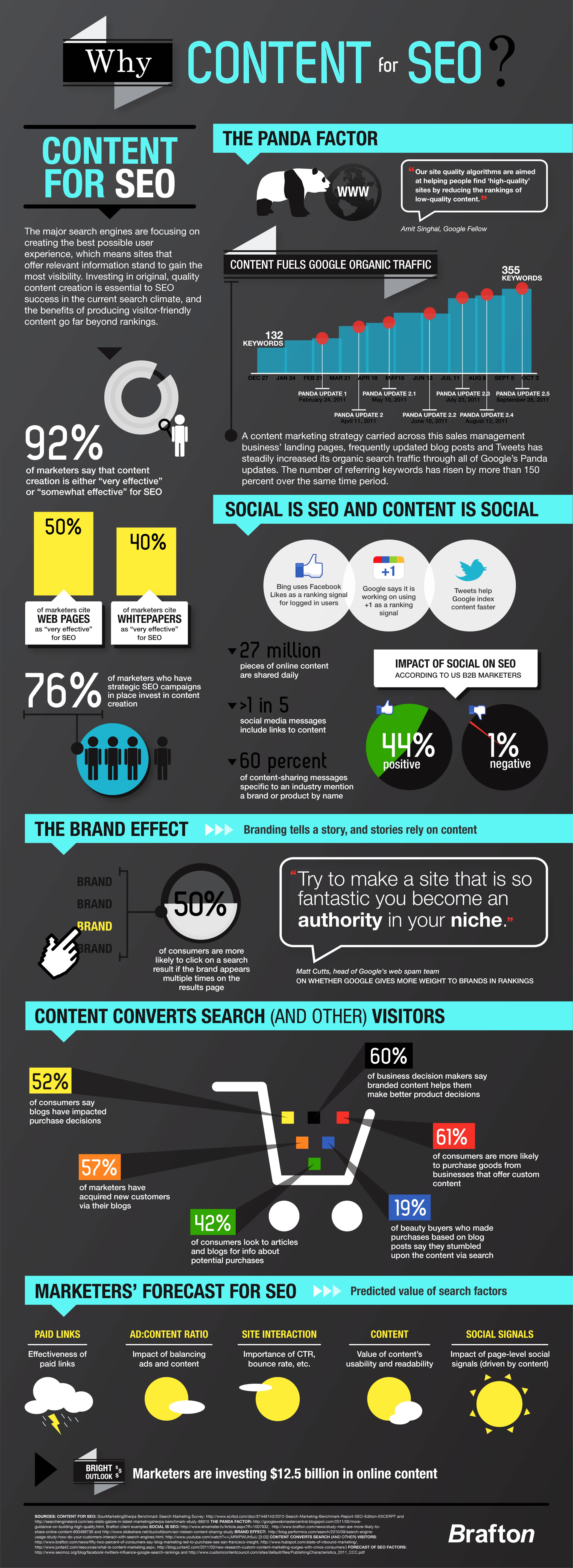
The Value of Website Content
Good content is what sets your website apart from the masses and delivers the right message into the hearts and minds of your customers. The success of your website is determined primarily by its content. Ultimately, content wins the wallets of your customers. All other components of your website (design, visuals, videos, etc.) provide a secondary support role. If you have effective taglines, great design will only enhance their effectiveness. Design itself does not sell. The content of your website should always begin with proper market research.
First, you should determine your high-value customers (HVC) and define personas for your website. Then you should determine how you will target them. Taglines and slogans that are customer-centric (i.e., focus on the needs and wants of the customer) are essential to capturing the attention of your prospective customers. Your taglines must deliver a clear value proposition and include an effective call to action. The key to a successful website is having clear, relevant, and keyword-rich content that delivers the right message with power and conviction. The content on your website should target your audience, engage them, and persuade them to take action.
Copywriting vs. Copyrighting
Because good content is so important to the success of your website, consider hiring a professional copywriter to deliver professional copy for your website. Copywriting is the process of professionally written content for marketing purposes. It is not to be confused with copyrighting–the process of obtaining a copyright or legal protection for your unique content (usually done by an intellectual property attorney). It is a good idea to secure both services. Once you invest in professional copywriting, it is recommended that you copyright it with the U.S. Patent Office. You may also consider filing for trademarks for some of your most successful taglines and slogans.
Videos and other Visual Content
Effective content doesn’t always come in the form of text. Videos on websites are changing the way important messages are communicated. Website visitors expect to get the information they need without effort. Custom Videos provide a great way to engage audiences and drive important messages in a format that requires less effort than reading large amounts of text. In addition, illustrations, infographics, diagrams and interactive presentations are often used to explain difficult concepts and assist users in their decisions.
Effective Design Strengthens Your Message
“A picture is worth a thousand words.” In web design, this is particularly the case, as first impressions are most important. Statistics show that your website typically has between one and five seconds to retain your website visitor. This is hardly enough time to read and process any content. This means that you have to find additional methods to retain the visitor’s attention or lose them to another website. This is where the design and appearance of your website is relevant. It creates the first impression, captures the attention, and engages your visitor to read and process your taglines, dive into your website, and ultimately help to make purchasing decisions with confidence.
Effective design works in harmony with your copy; it supports your messaging, strengthens it, and delivers it in a visual, easy-to-process manner, allowing your customers to connect with your website on a deeper level. Good design also reinforces your company’s brand and facilitates purchasing decisions. Design must work in tandem with your branding and content in order to emphasize your strengths and core business values, and ultimately direct users to take action. Make sure to follow some of the current web design trends.
Effective web design is more than just an aesthetically pleasing website. Professional web designers must factor in all design aspects, from the psychology of color and screen resolution to accessibility requirements and typography, in order to engage, excite and inspire. Challenge your web designers, and ask them to explain the rationale of the designs they promote. Don’t be afraid to ask questions.
Avoid Stock Photography on Your Website
Avoid using stock photography as much as possible. You may think a stock picture is a perfect fit for your website, but there are feasibly thousands of other websites using the exact picture. Nothing complements and represents your business more effectively than professional and original photographs of your products, customers, team and facilities. Custom photography makes your website stand out among the rest, and they lend credibility and connect with the visitor on a personal level. Using custom photography also provides the opportunity to incorporate your marketing message and brand into photographs. This will greatly improve the marketing power of your website.
Content Marketing
You have probably heard the term Content Marketing but may not be sure what it means. Content Marketing involves the creation and sharing of media and publishing content in order to acquire customers. This information can be presented in a variety of formats, including blog posts, news, videos, white papers, infographics, case studies, how-to guides, photos, etc. Content Marketing is one of the best methodologies for marketing your website and your business. Posting relevant, valuable and frequently updated information on your website will boost search engine optimization (SEO), help position you as an expert, and allow you to build relationships with your audience. All are priceless benefits for any business.
Importance of Website Content
One of the benefits of publishing good content is that it will increase the number of people who find your website through search engines. Search engines love content, especially frequently updated content, and if you want to get people to your site, it’s important to provide content that people want to see. Similarly, a search engine’s job is to find content for their customers. Consider the following: How many pages do you have detailing your company’s products and services on your website? You probably have a limited number. In a blog, for example, you can add fresh, relevant content virtually every day. Every additional page of content is potentially a new entry point (landing page) for your website. Many companies seek close relationships with their customers. It is wise to post relevant and useful information on your website in the form of blog posts, articles or whitepapers. This provides prospective customers to see you as an expert in your industry and be more inclined to conduct business with you. When you use content marketing, you establish trusted lines of communication with your customers, and build credibility in the process.
Use Social Media to Promote Content
One of the best ways to promote your content and generate traffic is through social media. To get the most from your content, you must harness the power of social media. For best results, your content should be syndicated, distributed and promoted through social media sites like Facebook, Twitter, and LinkedIn.




